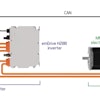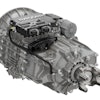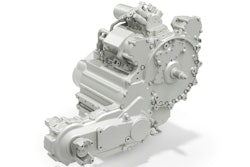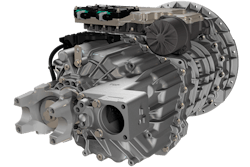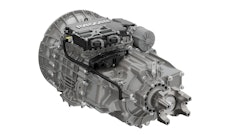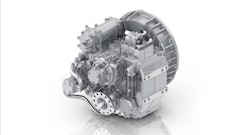At the United States’ leading driveline and transmission technology event, CTI Symposium America, hosted on May 13-16 in Novi, MI, Ricardo will present a range of technical papers and exhibits – including a radically new, robust and low-cost manual dual clutch transmission concept (mDCT) aimed at upgrading performance in the booming Utility Task Vehicle (UTV) market, by challenging its reliance on rubber belt CVT systems.
With diverse commercial applications ranging from defense to mining, farming and forestry, as well as innumerable leisure pursuits, the global market for lightweight UTVs has never been more buoyant. Most of these vehicles are based upon rubber belt CVT-based drivelines, which in the challenging application environments that such vehicles are used, can be susceptible to overheating and even belt failures, as well as offering a comparatively low driveline efficiency.
In order to provide a more robust alternative, Ricardo has developed a low-cost and mechanically simple 3-speed mDCT concept that offers improved performance over existing CVTs with enhanced reliability. The design approach included tractive effort modelling to determine optimal gear arrangement and utilized Ricardo’s SABR and IGNITE software for component sizing and efficiency simulation. The mDCT concept is estimated to have a 12% efficiency improvement over an existing CVT with the additional high/low gearbox, while integrating launching capabilities into a single sealed-for-life unit that can cover the entire operational envelope. It also maintains similar packaging space and part count. The paper to be published by Ricardo at CTI Symposium America will elaborate on the mDCT concept design approach, its components and operation, as well as modelling and testing.
Ricardo will present two further papers on innovations previously unveiled at the CTI Symposium Berlin in late 2018. The first will detail the development of a 6-phase, frameless, permanent magnet motor and its oil-cooled inverter with low thermal resistance. A particular focus of the paper is on the thermal management work, in particular on reducing the thermal resistance – and hence improving the efficiency – of the inverter’s metal oxide semiconductor field effect transistor (MOSFET). The solution developed is based on the use of direct oil cooling of the heat sink using the same ATF as used to cool the e-motor. With its high performance and compact configuration, the e-motor and inverter combination is ideal for 48V hybrid applications, providing a more cost-effective trade-off than today’s higher voltage products.
The final paper focuses on the development of a new high-performance transverse DCT concept, the development of which has been based on the company’s experience in the design of supercar transmissions. The unit’s dual clutch remains in line with the engine, while the two outputs drive high-speed bevel gearsets respectively delivering torque to the odd and even plus reverse gear sets. As configured, the Ricardo hybrid transverse DCT concept is approximately 37 percent shorter in length than its target/reference products, as well as offering better weight distribution, reduced vehicle polar moment of inertia, and ease of integration of an e-motor in a hybrid powertrain solution.
In addition to the papers, Ricardo will also present a wide selection of driveline-related technologies and innovations in the CTI Symposium expo, at stand No. 64.
